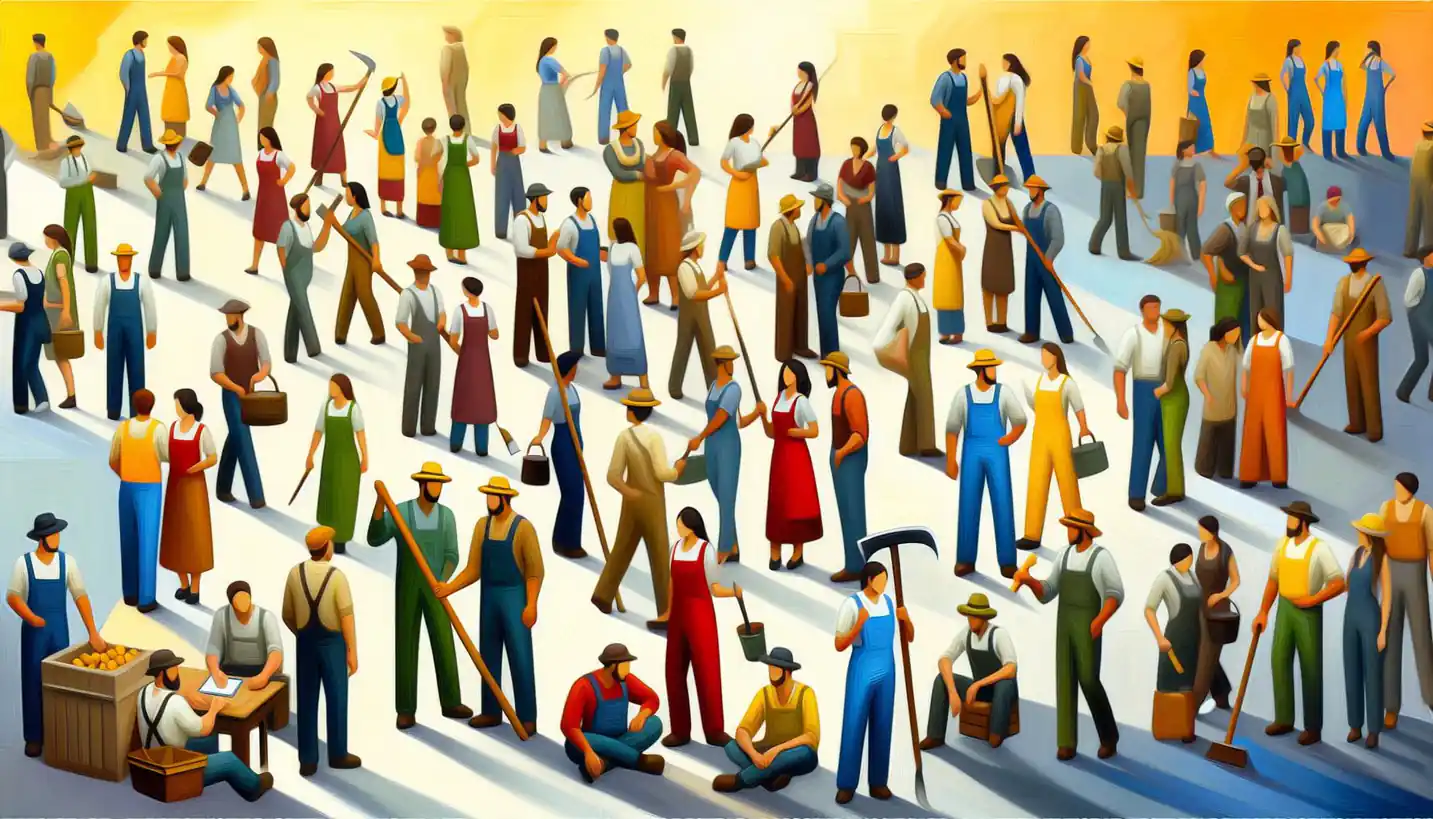· Sociology · 4 min read
Blue-Collar Crime: Insights into Everyday Transgressions
Blue-Collar Crime takes center stage with its portrayal of everyday misconduct. Dive into how these infractions shape local communities and social structures.

When we think of crime, our minds might drift to images of elaborate heists or high-profile financial scams. But there’s another side to crime that’s more prevalent in everyday life—blue-collar crime. Unlike the corporate dealings and insider trading that we often hear about, blue-collar crime refers to the kind of offenses committed by regular folks in their daily routines. Let’s delve into this under-the-radar aspect of criminology and sociology.
To start off, it’s important to understand what “blue-collar” really means in this context. The term originally referred to the hard-working, often manual labor jobs such as those in construction, manufacturing, or maintenance. So, when we talk about blue-collar crime, we’re referring to crimes typically committed by individuals within these economic settings. The distinguishing factor here is that these offenses are more immediately visible and tangible.
In practical terms, blue-collar crimes include things like theft, assault, vandalism, and even burglary. These are the kinds of crimes that can happen right in our own neighborhoods. Consider something as relatable as shoplifting. This seemingly minor act is a classic example of blue-collar crime. It’s not about complex cyber hacks or stock fraud; it’s about someone taking what they want or need right there on the spot.
Let’s put this into perspective with an example. Imagine John, a hardworking mechanic who’s just trying to make ends meet. His rent is due, he’s got bills stacking up, and his paycheck isn’t quite stretching far enough. In a moment of desperation, he might swipe a tool or two from his workplace, thinking he’ll return or repay them later. This is blue-collar crime in action—motivated by immediate needs or impulses rather than elaborate planning.
But why do people commit these crimes in the first place? The reasons can be quite varied. Economic pressure is a big driver, as we saw with John. When people feel financial stress or instability, they’re more likely to make spur-of-the-moment decisions that cross the line. Then there’s social influence. If someone’s community normalizes certain behaviors, like bending the rules a little to get by, they might follow suit without thinking twice.
Another factor is opportunity. When there’s a chance to commit a crime with minimal risk of getting caught, it can be tempting. Think of how easy it might be to slip a small item into your pocket in a crowded store, or how accessible a bike left unlocked on a sidewalk might appear. These opportunities can make the decision for some individuals.
From a sociological perspective, blue-collar crime provides fascinating insights into socioeconomic dynamics. It highlights the disparities in wealth and opportunity and how these can play out in day-to-day interactions. Often, these crimes are rooted in environments that lack resources or support systems. This context doesn’t excuse the behavior, but it does help explain it.
Interestingly, the justice system often reflects these disparities. Blue-collar crimes are more likely to be prosecuted heavily compared to white-collar crimes, which involve deception for financial gain by individuals in professional positions. This can lead to a cycle of disadvantage, where individuals from lower socioeconomic backgrounds face harsher penalties, reinforcing systemic inequalities.
There’s an ongoing debate in criminology about how best to address blue-collar crime. Should the focus be on punishment or prevention? Many advocates argue for intervention strategies that tackle the root causes, such as improving economic conditions, education, and community resources. The idea is to reduce the need or temptation for crime by changing the circumstances that lead to it.
This brings us to the question: what can society do? Education and awareness are vital. By understanding the sociological factors behind these crimes, communities can work to create environments where crime is less necessary or desirable. Policies that support job creation, fair wages, and accessible education can also play a significant role.
Moreover, community programs that offer support to those on the brink of committing crimes can be transformative. These initiatives might include job training, mental health services, and mentorship for at-risk individuals. By offering alternative paths, society can reduce the pull towards criminal activity.
It’s also essential to change the narrative around blue-collar crime. Instead of seeing these individuals solely as criminals, it’s important to recognize the complexities of their situations. This shift in perspective can drive more humane and effective solutions, focusing on rehabilitation over punishment.
In conclusion, blue-collar crime is a lens through which we can view the intersection of economics, society, and law. It’s not just about the act itself but the myriad factors that lead to it. By addressing these underlying issues, we pave the way for a society that’s not only safer but fairer too. So, the next time you hear about a petty theft or local vandalism, consider the story behind the act, and how, as a community, we can write a different ending.


